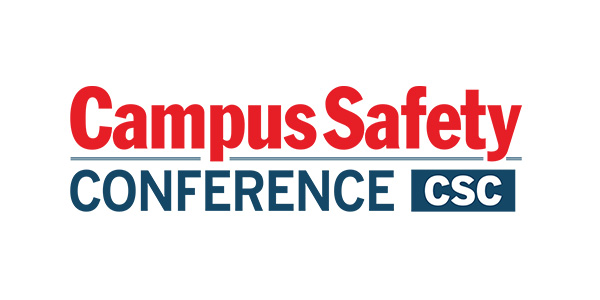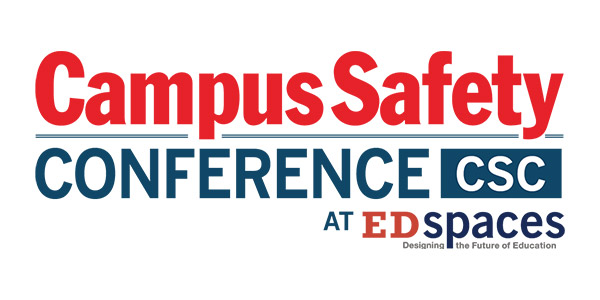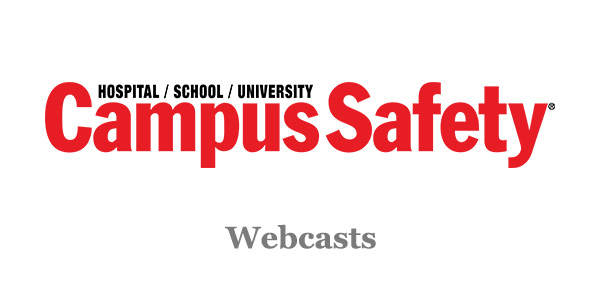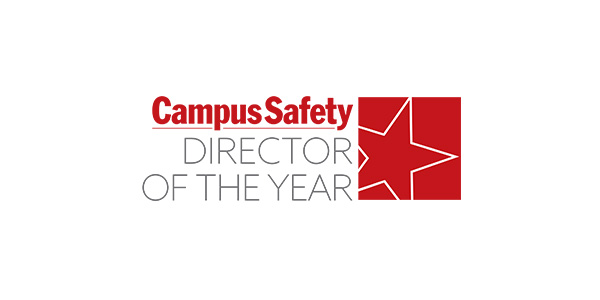As the end of the school year approaches and most college students head home for the summer months, many campuses open their doors to youth programs. Whether it be for activities such as overnight camps, sporting clinics or educational sessions, specialized security measures should be put in place to ensure the safety of minors.
While the safety of all individuals on campus should always be a priority, the protections put in place for minors significantly vary from those put in place for college students. The below article, originally published in 2015, gives recommendations on the steps your campus should take to ensure the safety of your young visitors.
In the weeks leading up to the start of a new academic term, there is typically a feeling of anticipation shared among faculty, staff and other campus administrators. This feeling often emerges as a result of a mutual desire to meet the needs and expectations of incoming and returning students.
Higher education professionals at all levels of the institution work diligently to navigate a sometimes complex coordination process in an attempt to identify and address the areas that command the most attention. This special kind of madness is also present at other times of the year but with the needs and expectations of a different group in mind: youth program participants. These individuals are typically not university students, yet they are in our classrooms, sleep in our residence halls, regularly interact with our university personnel and, by the way, are also under the age of 18.
Whether by accident or by design, many colleges and universities offer an array of opportunities for minors to visit campus. While minors are not ordinarily at the forefront of our minds when we think about members of the campus community, widely publicized incidents of child abuse and sexual assault allegations at higher education institutions — along with legislation — have underscored the need for colleges and universities to establish comprehensive youth protection efforts.
The goal of this article is to share insights on leading and emerging campus youth protection practices and provide a practitioner’s perspective on implementing such strategies. Here are five best practices that institutions of higher education should consider adopting if they have youth activities on campus.
1. Understand the Intricacies of Campus Youth Activities
Whether developing youth protection policies from scratch or improving existing efforts, the path to that development typically begins with a firm grasp of the intricacies of campus youth activities. While there are a number of ways this can be can realized, a good place to start is by conducting a thorough assessment of the numerous ways minors are involved in the campus community.
At first glance, it may appear that minors visit campus by virtue of their involvement in camps or conferences. However, like peeling back the onion, as institutions begin collecting an inventory of campus youth activities, they may discover that the presence of minors on campus goes beyond a particular category or type of activity.
Since the nature of such activities and the span of associated risks can also vary vastly throughout campus, institutions should use the inventory process as an opportunity to gain a better understanding of these differences in order to steer the development and implementation of their youth protection efforts.
While it is clear that results from a preliminary inventory of campus youth activities can be extremely valuable, in order for them to remain that way, they should be frequently revisited. Because new programs are continually emerging and existing programs can undergo significant transformations from year to year, a long-term approach is needed to effectively track campus youth activities.
With this in mind, a growing number of institutions (including the University of Florida, Texas A&M University, Penn State, Vanderbilt, among others) have updated their youth protection policies to incorporate mandates that require campus youth activities to centrally register with the school in advance of program operations.
Institutions looking to centrally track campus youth activities should proactively seek a consensus on the types of activities that should centrally register. For instance, will youth programs sponsored by third-party organizations need to centrally register? What about those hosted by student organizations? If youth activities require the presence of parents, guardians or other authorized chaperones, will such activities fall outside the scope of registration?
It is also important to determine the type of information that will be tracked. Today’s tracking solutions are still evolving and are likely to vary from institution-to-institution. Perhaps the most evolved strategy involves the central tracking of three core elements:
- General program information
- Staff information
- Participant information
By centrally collecting this level of detail, institutions will be able to comprehensively track activities across campus, validate compliance with established standards and centrally maintain a historical record of university youth activities.
Last but not least, institutions should determine how these functions will be carried out. Possible options include the use of paper registration forms, web applications, spreadsheets and other databases, as well as more elaborate registration management systems.
2. Offer Ongoing Training and Education
In addition to taking stock of campus youth activities, institutions should offer opportunities for ongoing training and education to program staff. Among other factors, close attention should be paid to the overall content of such training efforts.
At a minimum, we suggest covering essential information pertaining to identifying, preventing and responding to child abuse and sexual abuse. Training materials should outline applicable reporting laws, policies, procedures and potential legal implications. In doing so, personnel will be better prepared and empowered to properly respond to suspicions of inappropriate behavior.
These materials should also describe the different types and symptoms of abuse. Being able to proactively spot possible indicators of child abuse and sexual assault will enable program staff to intervene without delay.
Finally, guidelines on expectations for interactions between staff and minors, including communication, privacy and appropriate boundaries, should also be clearly communicated.
Professional development opportunities covering these areas can help cultivate and promote a greater understanding of the realities of child abuse and sexual abuse. They can also be used to effectively communicate established expectations throughout the institution.
Along with making a decision on the content of training and educational materials, institutions should also determine who will be required to complete such training mandates. Often, institutions require this form of training strictly for individuals working with minors; however, some have started to require that individuals with regular access to minors (e.g. residence hall staff, sports officials, guides, etc.) also take the training.
Other important factors to consider during implementation include the frequency of training (annual, biennial, etc.), delivery methods (instructor-led, web-based, etc.), and how levels of proficiency will be measured (quizzes, pre- and post-assessments, etc.). To be successful, the selected approach should also take into account the functional and technical needs of learners.
In the end, institutions should reflect on these areas when designing their implementation strategy and tailor their approach to meet their specific goals and produce the most effective results.
3. Ensure There Is Adequate Supervision
There is no denying that education and training play a key role in actively preventing and responding to cases of child abuse, sexual abuse or neglect. Adequate supervision plays an equally important role in safeguarding minors from the risk of abuse or maltreatment. But what does “adequate supervision” entail, and what steps can institutions take to help ensure that activities involving minors are properly overseen?
Since all university youth activities are not created equal, a number of factors should be considered when developing and implementing strategies to adequately supervise minors on campus.
For instance, while it is recommended that institutions establish minimum staff-to-participant ratios, a blanket approach may neglect the needs and abilities of program participants and may fail to produce ideal results. Instead, institutions should consider adopting supervisory ratios that take the age and skill level of participants into account, as well as other factors, such as the nature of activities, the environment in which they are taking place and the size of the program.
To illustrate, consider an overnight camp with a wide age range among participants. It would be prudent for such a camp to carefully plan how activities will be clustered and sleeping accommodations will be assigned.
To help navigate similar scenarios, many well-established youth-serving organizations have worked on developing sound supervision practices, which may also be suitable for university youth activities.
For example, supervisory ratios recommended by the American Camp Association (ACA) provide a basis for setting the minimum number of staff needed to ensure adequate levels of supervision. Such ratios are adjusted depending on the age of campers and the type of camp (day or overnight).
Another example is the two-deep leadership approach used by the Boy Scouts of America (BSA). The intent of this approach is to limit the opportunity for one-on-one interaction between staff and youth participants. These efforts not only help mitigate risks to minors but can also help staff protect themselves from false allegations.
To further strengthen supervision practices, facilitators of university youth activities should be careful not to ignore how minors are accounted for throughout the length of the programs. To assist with this, institutions can provide facilitators of university youth activities with guidance on the development of sign-in and sign-out procedures. At a minimum, such procedures should give programs a sense of how to document attendance, the type of verification needed during sign-out and methods for obtaining advance parental consent detailing who is authorized to pick up youth participants.
Additionally, it may be beneficial to provide guidance on restroom protocols and expectations for supervision in different settings, such as during transportation, field trips, the overnight component of the program and emergencies.
In the end, an active approach to supervision (in which systems to account for program participants are in place, activities are routinely monitored and staff are continuously vigilant and engaged with participants) will contribute to the overall safety of minors involved in university youth activities.
4. Define Your Pre-Employment Screening Protocols
Another valuable step in managing risks associated with having minors on campus is to properly vet individuals working with minors. While criminal background checks are perhaps the most prevalent technique used to accomplish this, it would be wise to view them as a component of overall screening protocols and not necessarily the single source for screening personnel. Instead, seek to implement a balanced combination of screening methods.
For instance, the Centers for Disease & Control (CDC) suggests that youth-serving organizations consider tailoring their hiring process to ensure that employment applications, candidate interviews and reference checks provide relevant insights concerning individuals slated to work with minors. This approach may yield information on previous interactions with minors, potential red flags and may even function as a tool to discourage offenders.
As alluded to earlier, criminal background checks are a fairly standard element of youth protection efforts. However, it is important to note that the types of background checks used may vary from institution to institution. Because a number of background check options are available, a thorough assessment may be needed to determine which approach best meets the needs of the institution.
For instance, state background checks may produce results for offenses committed within a particular state; however, national background checks (typically the more expensive route) will likely produce a more complete summary of a person’s criminal history.
Being aware of such differences, along with having knowledge of statutes governing the type of background checks needed for individuals working with minors, will help institutions select an approach that is both fitting and in line with applicable statutory requirements.
5. Ongoing Evaluation and Support Is a Must
While the implementation of university-wide protection of minors policies is essential, institutions are quickly realizing that having policies in place is only half the job. To ensure campus youth protection efforts are successful, institutions must also implement processes to evaluate the effectiveness and adoption of such efforts. This will help institutions proactively identify and address areas of concern and provide facilitators of youth activities with necessary support.
While a more detailed framework for evaluating youth activities can be found in the College and University Auditor article, “Monitoring the Effectiveness of Youth Protection Efforts,” two critical questions must be answered when seeking to implement such efforts:
- What are the core areas being monitored?
- How will monitoring activities be carried out?
While there may be differences in the core monitoring areas selected by institutions, at a minimum, such areas should align with university protection of minors policies and applicable child protection laws. Core monitoring areas may include levels of supervision, appropriateness of interactions, protocols used for accounting for minors, adequacy of camp rules and conduct expectations, compliance with staff screening and training requirements, proficiency of mandatory reporting laws, collection of parental consent and waivers, and verification of insurance.
The University of Florida monitors such areas by using a number of techniques, including integrating key compliance standards into its central tracking systems, issuing program scorecards, conducting onsite monitoring visits and providing facilitators of youth activities with self-monitoring tools. Institutions can use these types of tools to measure overall program effectiveness, promote accountability, rate the overall level of compliance, track year-over-year progress, jointly analyze results with programs and plan for future activities.
These Strategies Can Mitigate Your Risk
Year after year, institutions across the country welcome thousands of children to their campuses. High school students are filled with excitement as they step foot on the same field where their favorite athletes played football. Others are eager to learn about existing university programs and upon completing their short visit, are just as eager to apply for future admission. Parents smile as they drop their kids off in an environment that provides their children with cutting edge insights and enriching educational experiences.
Many institutions recognize the value of creating such opportunities for minors and are actively seeking to continue this tradition by implementing strategies to protect minors on campus and mitigate associated risks. While the particulars of campus youth protection efforts may vary from institution to institution, the core elements and considerations presented in this article provide a basis that may assist institutions in the enhancement, development, and/or implementation of such efforts.
Omar Andujar, CCEP is the director of youth conference services for the University of Florida.
NOTE: The views expressed by guest bloggers and contributors are those of the authors and do not necessarily represent the views of, and should not be attributed to, Campus Safety.













